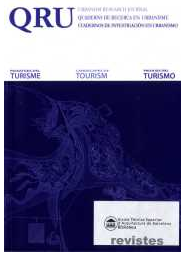La costruzione dello spazio turistico nella Costa Smeralda: neorealismo o banalizzazione dell’architettura vernacolare?
DOI:
https://doi.org/10.5821/qru.9587Abstract
Costa Smeralda was founded in the early 1960s in the north-eastern coast of Sardinia, at a time of great change for tourism. While for the rest of Europe the tourism boom after World War II meant the democratization of the holidays and the spread of mass tourism, Costa Smeralda was founded in opposition to the other mass tourism destinations fate in the Spanish, Italian and French coasts of the same period. The insular condition and the pristine nature of Costa Smeralda became a symbol of exclusivity, which attracted elite clients looking for a heavenly enclave of luxury tourism in the heart of the Mediterranean. The reinterpretation of vernacular architecture and the immanence of the natural landscape would have been the tools used for the construction of space tourism.Downloads
Issue
Section
License
Those authors who have publications with this journal, accept the following terms:
a. Authors will retain their copyright and guarantee the journal the right of first publication of their work, which will be simultaneously subject to the Creative Commons CC BY-NC-ND-4.0 recognition license that allows third parties to share the work provided that its author and its first publication are indicated in this journal, but they cannot be changed or used commercially.
b. Authors may adopt other non-exclusive license agreements for the distribution of the version of the published work (eg: deposit it in an institutional telematic archive or publish it in a monographic volume) provided that the initial publication in this journal is indicated.
c. Authors are allowed and recommended to disseminate their work through the Internet (e.g. in institutional telematic files or on their website) before and during the submission process, which can lead to interesting exchanges and increase citations. of the published work. (See The effect of open access).













